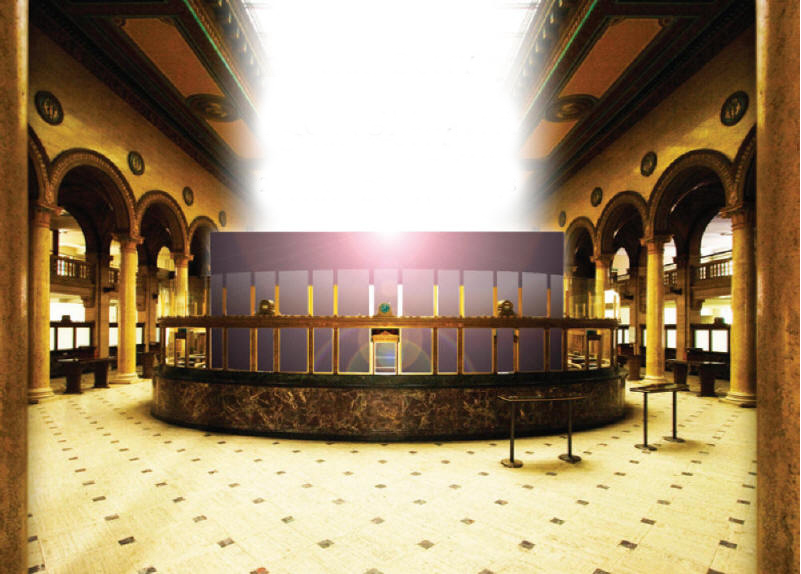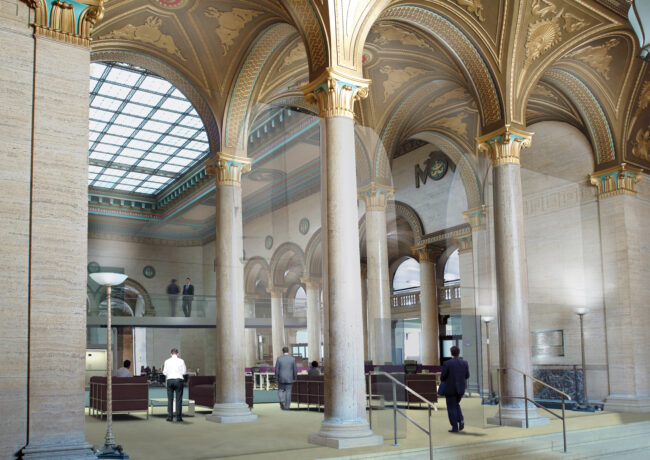Barclays uses Biennial to market 4 Water Street
The vacant Grade II*-listed banking hall at Martins Bank Building, on Liverpool's Water Street, now available to sub-let following Barclays Bank's move to Lord Street, is to play host to one of the largest artworks during the Liverpool Biennial 2008.
 'Monuments', pictured left, by Liverpool artist Terry Duffy will be open to the public free of charge from 20 September to 30 October.
'Monuments', pictured left, by Liverpool artist Terry Duffy will be open to the public free of charge from 20 September to 30 October.
Duffy said of his work: "It is a powerful fusion of architecture, fine art and history. It questions, challenges and informs architectural and spatial democracy, contemporary aesthetics and cultural legacy."
A series of 10ft high artworks will draw attention to the significance of the building and Liverpool's "history, its once global maritime links and the context for its reinvention".
On display will also be the proposals to transform the banking hall, offering up to 40,000 sq ft for a range of uses including a company headquarters or a trophy hotel/leisure operator. The rent is currently £342,500 a year and is due to expire in 2014 although there is a review in December 2009.
Plans include a glass lift and suspended walkway to allow easy access to the mezzanine floor and also a double-height glazed reception area.
Stuart Keppie, partner at Keppie Massie, joint letting agent on 4 Water Street, said: "The exhibition provides the perfect opportunity to showcase one of the most magnificent pieces of architecture in the North West. The premises on offer, which also include lower ground and mezzanine areas, would provide an outstanding opportunity for a statement office headquarters, luxury hotel or leisure facilities with perhaps the most prominent profile in Liverpool's central business district."
The bank was built in the 1930s as the headquarters for Martins Bank. It was designed in the neo classical revival style by famous Liverpool architect Herbert J Rowse, who also designed the India Buildings and the Liverpool Philharmonic Hall. The bank was used as the safe for the nation's gold deposits during World War Two.
Keppie Massie and Mason Owen are joint agents.




